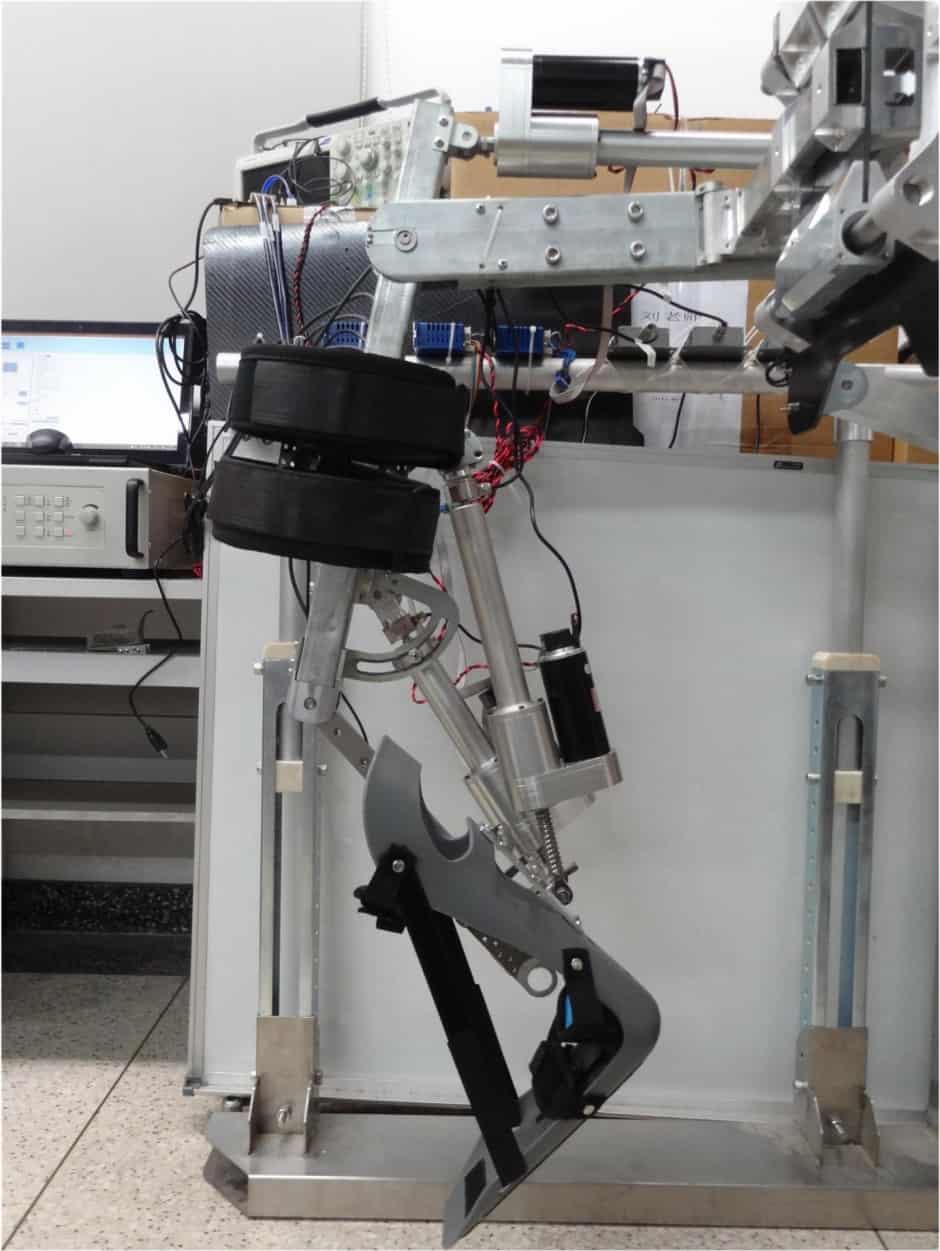
The prototype device has been designed to help stroke victims and paralysed patients strengthen their muscles and potentially regain the ability to walk
The device is one of the first to focus in detail on the knee joint, one of the most complex mechanical systems within the human body and a critical player during gait.
The knee joint's motion is actuated by several skeletal muscles along its articular surfaces, and – in order to ensure that it simulates the behavior of a natural knee joint as closely as possible - features a parallel mechanism similar to skeletal muscles.
"Our new design features a parallel knee joint to improve the bio-imitability and adaptability of the exoskeleton," explained Weihai Chen, a professor at Beihang University's School of Automation Science and Electrical Engineering, in Beijing, China.
The resulting design is the first known use of a parallel mechanism at the knee joint to imitate skeletal muscles. "Our design goes beyond solving the transparency problem in the knee joint and it's a simple structure," Chen added. "Unlike most previous exoskeletons, which simplified the knee joint as a pin joint, ours provides two degrees of freedom to make the exoskeleton's movement consistent with a patient's natural movement."
The team is exploring a number of options for controlling the exoskeleton - including using a patient’s electrical muscle signals (electromyography - EMG) and electrical impulses from the brain (electroencephalogram - EEG).
The next step is to work with hospitals on proper clinical trials of the system. "We'd also like to commercialise it in the near future, so we'll be working to make the robot's appearance fancier and enhancing the user interface to be more user friendly," added Chen.




Red Bull makes hydrogen fuel cell play with AVL
Formula 1 is an anachronistic anomaly where its only cutting edge is in engine development. The rules prohibit any real innovation and there would be...